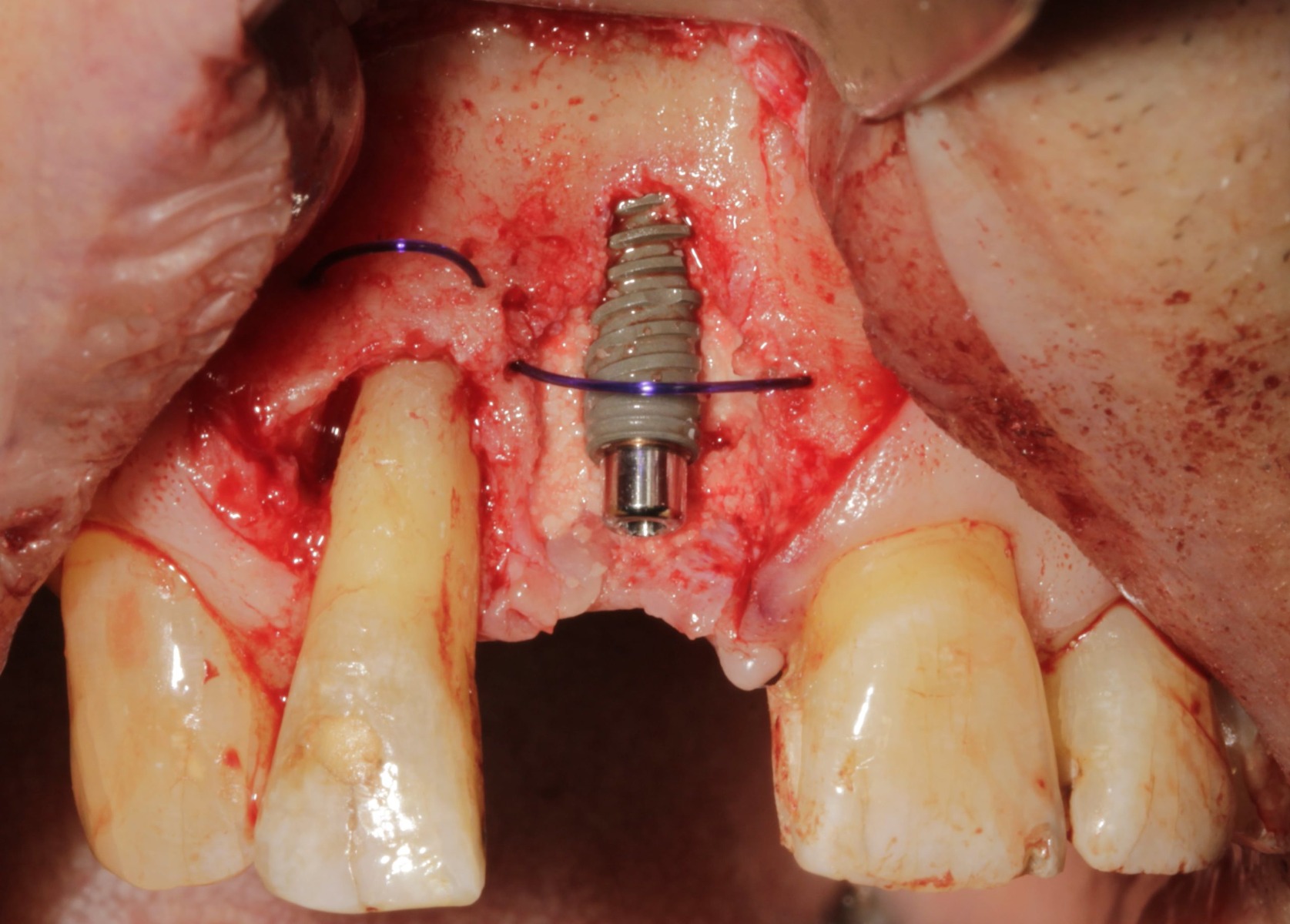Tenting Technique with EthOss Bone Graft Material

What is the 'Tenting Technique'?
The ‘Tenting Technique’ is a method of using large, slowly resorbing sutures to stabilise graft material and aid retention of volume in dental implant surgery.
The technique, sometimes referred to as the ‘dome device’ technique, was first published in 2011 and widely cited in the 2014 publication “Resorbable Dome Device and Guided Bone Regeneration: An Alternative Bony Defect Treatment Around Implants. A Case Series” from Parma-Benfenati.

However, due to the increasing popularity of new self-hardening bioactive materials, the practice has since enjoyed a resurgence thanks to the methods of Dr Michael Ainsworth BDS.
Dr Ainsworth (BDS, Birmingham), who first encountered the procedure in the Parm-Benfenati paper, has perfected the tenting technique using EthOss, an innovative synthetic bone grafting material that works with the host’s body, upregulating the healing response to regenerate lost bone.
Dr Ainsworth’s tenting technique is rapidly being adopted by dental surgeons around the world.
Why EthOss® is Suited to the Tenting Technique

One of the key features that makes EthOss® so well-suited to the tenting technique is that there is no need for a barrier membrane. Instead, the material relies on a combination of ß tri-calcium phosphate and calcium sulphate, allowing it to set in situ - creating a stable graft with an integrated cell-occlusive barrier.
This helps prevent soft tissue ingress, removing the need for a separate collagen membrane and giving the periosteum (and related blood supply) direct access to the graft site from day one.
How to Perform the Tenting Technique
While sinus tenting procedures can appear daunting, Dr Ainsworth describes the method behind his tenting technique as “simple”.
As teeth are lost, a physiologic shrinkage occurs, both palatally and vertically. The sinus floor can begin to fall, enlarging the sinus cavity as around 40 to 60 per cent of bone structure can be lost in the first 3 years following extraction.
This can result in a reduction in the vertical height of the hard tissue required to place a dental implant to help restore the site. In some situations, sinus tenting can be a simple procedure that lifts the maxillary sinus membrane upward to make some room for additional bone. This augmentation method offers increased availability of hard tissue to accept a dental implant.
Before surgery, a thorough evaluation must be carried out before the maxillary sinus can be divided into compartments separated by septae.
The tenting technique requires the positioning of short lengths of 2-0 PDS suture into the defect before grafting. This will create a ‘dome device’ capable of providing the required tensile strength and stability against soft tissue.
Complete by adding a wetter grafting solution to the site. Over time, the newly formed bone around the dental implant will resemble the host’s native bone.
Stability without membranes: "Dome Device" technique for larger bone defects - Dr Mike Ainsworth
Stability without membranes: "Dome Device" technique for larger bone defects - Dr Mike Ainsworth
My Journey with EthOss®
Dr Ainsworth has always been keen to try new and revolutionary techniques in dentistry.
Having championed Fortoss Vital - an early incarnation of EthOss – in the mid-2000s, he quickly identified the benefits of using a graft material with an integrated membrane, but found himself limited by the occasional difficulties in handling.
Following the launch of EthOss in 2015, Dr Ainsworth quickly adopted the new material, incorporating it into his practices. Under the tutelage of EthOss co-founder Dr Peter Fairbairn, Dr Ainsworth enjoyed tremendous success following his adaptation of the tenting technique and its use during dental implant surgery.

A regular user of EthOss, Dr Ainsworth continues to use synthetic biomaterials in bone grafting and soft tissue development, streamlining his techniques for the benefit of those inspired by his teachings.
